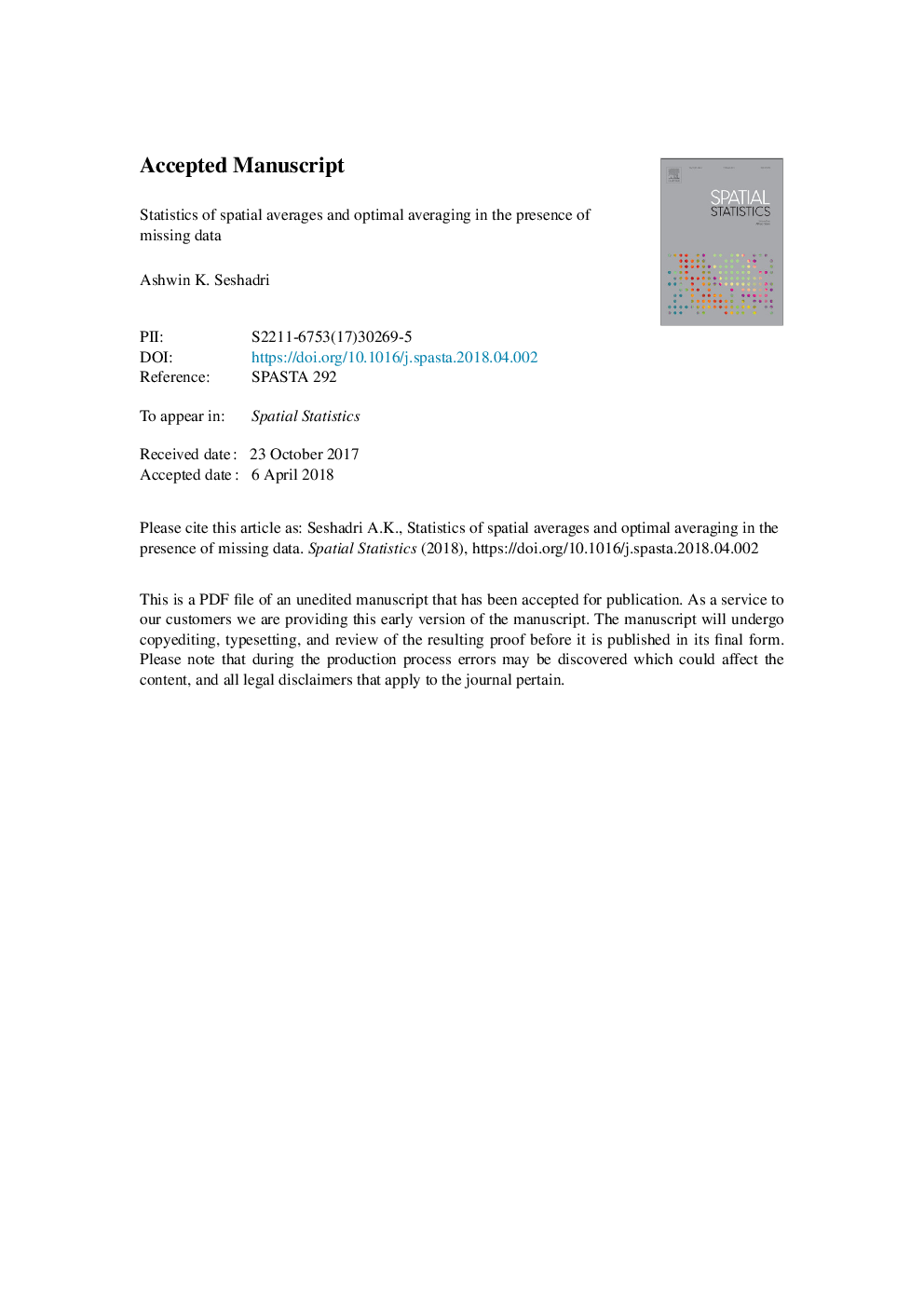| Article ID | Journal | Published Year | Pages | File Type |
|---|---|---|---|---|
| 7496291 | Spatial Statistics | 2018 | 40 Pages |
Abstract
We estimate statistics of spatial averages defined by linearly weighting available observations over a spatial domain, and derive an account of bias and variance in the presence of missing observations. With missing observations, the spatial average is a ratio of random variables, and estimators are derived by truncating Taylor series of functions of the ratio followed by taking suitable expectations ('delta method'). The resulting estimators are approximate, and perform well when compared with simulations. Previous authors have examined “optimal averaging” strategies for minimizing mean squared error (MSE) of a spatial average, and we extend the analysis to the case of missing observations. It is shown that to minimize variance primarily requires higher weights where local variance and covariance are small, whereas minimizing bias requires higher weights where observations lie nearer to true spatial average. Missing data increases variance and contributes to bias, and reducing both effects involves emphasizing locations with observations nearer to the spatial average. The framework is applied to spatially averaged rainfall over India. We estimate standard error of all-India rainfall as the combined effect of measurement uncertainty and bias, in the case where weights are chosen to minimize MSE. We also discuss different special cases of the estimators, and applications thereof.
Keywords
Related Topics
Physical Sciences and Engineering
Earth and Planetary Sciences
Earth and Planetary Sciences (General)
Authors
Ashwin K. Seshadri,
